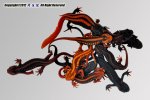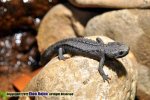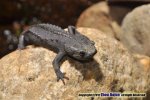-
Did you know that registered users see fewer ads? Register today!
- Advanced Discussion
- Species, Genus & Family Discussions
- Crocodile Newts (Tylototriton & Echinotriton)...
You are using an out of date browser. It may not display this or other websites correctly.
You should upgrade or use an alternative browser.
You should upgrade or use an alternative browser.
My Tylototritons of China
- Thread starter DrWill
- Start date
FrogEyes
Active member
- Joined
- Sep 5, 2010
- Messages
- 908
- Reaction score
- 41
- Points
- 28
- Location
- Southern Minnesota
- Country
- Canada
Nice...so I see...
Three T.shanjing
One T.kweichowensis
One T.cf.kweichowensis
One T.taliangensis
One T.cf.asperrimus "Mangshan"
One T.wenxianensis complex [not T.broadoridgus]
And one T.asperrimus group [several more or less indistinguishable species; not T.wenxianensis, T.dabienicus, or T.broadoridgus].
Sound about right?
Three T.shanjing
One T.kweichowensis
One T.cf.kweichowensis
One T.taliangensis
One T.cf.asperrimus "Mangshan"
One T.wenxianensis complex [not T.broadoridgus]
And one T.asperrimus group [several more or less indistinguishable species; not T.wenxianensis, T.dabienicus, or T.broadoridgus].
Sound about right?
There are tow species that I personally acquisition them in type locality,T.asperrimus(the most-right one) and T.verrucosus(in the middle of the right).Nice...so I see...
Three T.shanjing
One T.kweichowensis
One T.cf.kweichowensis
One T.taliangensis
One T.cf.asperrimus "Mangshan"
One T.wenxianensis complex [not T.broadoridgus]
And one T.asperrimus group [several more or less indistinguishable species; not T.wenxianensis, T.dabienicus, or T.broadoridgus].
Sound about right?
The rest of them,I think they are:4 T.shanjing ,1 T.kweichowensis ,1 T.cf.kweichowensis and 1 T.cf.asperrimus "Mangshan".
FrogEyes
Active member
- Joined
- Sep 5, 2010
- Messages
- 908
- Reaction score
- 41
- Points
- 28
- Location
- Southern Minnesota
- Country
- Canada
Ah yes - I miscounted the T.shanjing and didn't look close enough at the T.verrucosus.
In light of the fact that animals NOT from the type localities are likely not to be T.verrucosus [new, but limited data] or T.asperrimus [extensive data], I'm glad you have topotypic animals. I think a series of portraits of animals from type or known localities would be very helpful for people to know more or less what each species looks like at the places they were named. For now, that won't help identify members of Yaotriton because we don't yet know of useful physical differences among them. But it should help clear up confusion regarding the T.wenxianensis complex and T.shanjing-T.verrucosus. Except for the Mangshan, I can't see enough of the Yaotriton to identify any of them. Even the Mangshan identification is based on poor assumptions, since the trait I looked for is one which is present in T.notialis and T.asperrimus.
I for one would appreciate more pictures, especially if they clearly show each species completely.
In light of the fact that animals NOT from the type localities are likely not to be T.verrucosus [new, but limited data] or T.asperrimus [extensive data], I'm glad you have topotypic animals. I think a series of portraits of animals from type or known localities would be very helpful for people to know more or less what each species looks like at the places they were named. For now, that won't help identify members of Yaotriton because we don't yet know of useful physical differences among them. But it should help clear up confusion regarding the T.wenxianensis complex and T.shanjing-T.verrucosus. Except for the Mangshan, I can't see enough of the Yaotriton to identify any of them. Even the Mangshan identification is based on poor assumptions, since the trait I looked for is one which is present in T.notialis and T.asperrimus.
I for one would appreciate more pictures, especially if they clearly show each species completely.
TylototritonGuy
New member
- Joined
- Feb 25, 2012
- Messages
- 352
- Reaction score
- 29
- Points
- 0
- Country
- United Kingdom
- Display Name
- MantellaGuy
Very nice newts
Which type are the 2 bright orange detailed ones in the middle ?
( middle bottom and middle centre )
Tylototriton Shanjing - Mandarin Crocodile Newts
Each T.shanjing in the photo comes from different habitats,were separated by rivers and mountains.The 2 bright orange ones are neighbors,the 2 habitats are about 150km apart.Very nice newts
Which type are the 2 bright orange detailed ones in the middle ?
( middle bottom and middle centre )
T.shanjing and T.verrucosus are very interesting newts,they have many different regional expression.
FrogEyes
Active member
- Joined
- Sep 5, 2010
- Messages
- 908
- Reaction score
- 41
- Points
- 28
- Location
- Southern Minnesota
- Country
- Canada
Note that, although the above animal is all-black, other animals from the same locality are gray and have pale orange markings on the costal warts and parotid glands.
FrogEyes
Active member
- Joined
- Sep 5, 2010
- Messages
- 908
- Reaction score
- 41
- Points
- 28
- Location
- Southern Minnesota
- Country
- Canada
Although I don't have the reference so far, let's try this again...
By body position, in three rows:
kweichowensis, shanjing, yangi, asperrimus
pseudoverrucosus, pulcherrima, verrucosus
lizhenchangi, shanjing, taliangensis
If I were to have doubts because we don't know the diagnostic traits...top row "shanjing" has crests more like middle row "pulcherrima" than bottom row "shanjing". None really have the broad warts of pseudoverrucosus.
By body position, in three rows:
kweichowensis, shanjing, yangi, asperrimus
pseudoverrucosus, pulcherrima, verrucosus
lizhenchangi, shanjing, taliangensis
If I were to have doubts because we don't know the diagnostic traits...top row "shanjing" has crests more like middle row "pulcherrima" than bottom row "shanjing". None really have the broad warts of pseudoverrucosus.
Although I don't have the reference so far, let's try this again...
By body position, in three rows:
kweichowensis, shanjing, yangi, asperrimus
pseudoverrucosus, pulcherrima, verrucosus
lizhenchangi, shanjing, taliangensis
If I were to have doubts because we don't know the diagnostic traits...top row "shanjing" has crests more like middle row "pulcherrima" than bottom row "shanjing". None really have the broad warts of pseudoverrucosus.
I don't have pseudoverrucosus.According to Houmian‘s description,pseudoverrucosus' head is smooth,and I think that its legs are very strong like the taliangensis.And pseudoverrucosus distributed in DaLiang mountains in Sichuan province,my one from Gaoligong Mountains in Yunnnan province,so i think it's also verrucosus(or shanjing).
- Advanced Discussion
- Species, Genus & Family Discussions
- Crocodile Newts (Tylototriton & Echinotriton)...
General chit-chat
- No one is chatting at the moment.
-
Shane douglas:with axolotls would I basically have to keep buying and buying new axolotls to prevent inbred breeding which costs a lot of money??+1
-
Thorninmyside:Not necessarily but if you’re wanting to continue to grow your breeding capacity then yes. Breeding axolotls isn’t a cheap hobby nor is it a get rich quick scheme. It costs a lot of money and time and deditcation+1
-
Clareclare:Would Chinese fire belly newts be more or less inclined towards an aquatic eft set up versus Japanese . I'm raising them and have abandoned the terrarium at about 5 months old and switched to the aquatic setups you describe. I'm wondering if I could do this as soon as they morph?+1
Clareclare:
Would Chinese fire belly newts be more or less inclined towards an aquatic eft set up versus...
+1



